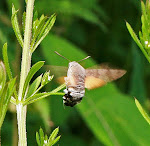
Arenaria norvegica subsp. anglica, Ingleborough, North Yorkshire
Date: retrospective to the mid 1990s
This very scarce small white-flowered plant is a member of the Caryophyllaceae (Pink family). Arenaria norvegica occurs in Britain as two distinct sub-species (subsp. anglica and subsp. norvegica). The former, subsp. anglica, is a British endemic (i.e. not known elsewhere in the world) and is restricted to just a small area of the Yorkshire Dales whereas subsp. norvegica, although still scarce, is rather more widespread and is found in the Assynt area of Sutherland, Shetland, Argyll, the Isle of Rhum and western Ireland.
Subspecies anglica is biennial with narrow elliptic-ovate leaves, flowers to c.20mm in diameter and with three styles; subsp norvegica is perennial, has obovate leaves and smaller flowers bearing 3-5 styles.

Subp. anglica, Crummack, Ingleborough
Most populations of subsp. anglica are to be found on the limestone pavement area on the eastern flank of Ingleborough although it can easily be overloooked. It prefers very thin soils over well-drained limestone and grows in cracks and small depressions in the rock where competition from other plants is minimal. It has also been found in damp flushes and occasionally has colonised track-sides where limestone gravel has been laid as a base. In the early 1990s I took part in a survey of the plant on Ingleborough where eventually 27 separate populations were found in this very limited area. Population sizes can fluctuate dramatically depending on climatic conditions at the time of flowering (May onwards).

Subsp. norvegica, River Loanan shingle, Inchnadamph, Sutherland
Subsp. norvegica is also restricted to limestone substrates. In Scotland it mostly grows on fine scree and on riverside gravels (as above). In Ireland it was recorded on a single occasion in 1961 on extensive pavement in the Burren but couldn’t be re-found in subsequent years and was thought extinct until rediscovered in 2008. It also occurs in Scandinavia and Iceland.
.jpg)






No comments:
Post a Comment